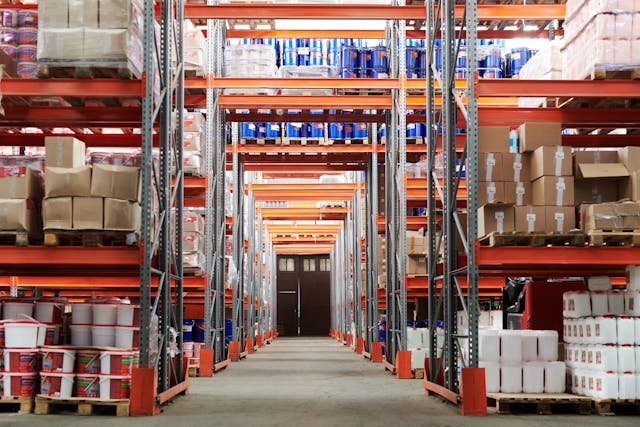Introduction
Production outsourcing has become a strategic move for businesses looking to enhance efficiency, reduce costs, and access specialized expertise. Companies outsource production to third-party manufacturers, either domestically or internationally, to focus on core operations and scale their businesses effectively.
This article explores the concept of Production Outsource, its advantages, challenges, and best practices, along with how SGK India provides reliable outsourcing solutions.
1. What is Production Outsourcing?
Production outsourcing refers to the practice of delegating manufacturing or production processes to external suppliers or contractors. Businesses partner with third-party vendors to handle tasks such as product assembly, packaging, or even full-scale manufacturing.
This approach is widely used in industries such as:
✅ Automobile Manufacturing – Outsourcing of parts like engines, tires, and electronics.
✅ Electronics Industry – Assembly of smartphones, laptops, and semiconductors.
✅ Textile & Apparel – Clothing brands outsourcing garment production.
✅ Pharmaceuticals – Drug formulation and packaging outsourced to specialized labs.
2. Why Companies Outsource Production?
2.1 Cost Reduction
Outsourcing helps companies lower operational expenses, including labor, materials, and infrastructure costs. Many businesses prefer outsourcing to countries with lower production costs.
2.2 Focus on Core Competencies
By outsourcing manufacturing, businesses can focus on research, development, branding, and sales while experts handle production.
2.3 Access to Advanced Technology & Expertise
Third-party manufacturers often have specialized machinery, skilled labor, and experience, leading to better quality and efficiency.
2.4 Scalability & Flexibility
Outsourcing allows businesses to scale production up or down based on market demand without heavy investments in equipment or workforce.
2.5 Faster Time to Market
With outsourcing, companies can speed up production cycles, ensuring faster product launches and meeting consumer demands efficiently.
3. Types of Production Outsourcing
3.1 Offshore Outsourcing
Companies outsource production to a different country where labor and material costs are lower.
✅ Example: A U.S.-based clothing brand outsourcing garment production to India or Bangladesh.
3.2 Nearshore Outsourcing
Manufacturing is outsourced to a neighboring country with lower costs but closer proximity for easy collaboration.
✅ Example: A European car company outsourcing parts manufacturing to Poland.
3.3 Onshore (Domestic) Outsourcing
Production is outsourced within the same country but to a third-party manufacturer.
✅ Example: A U.S. smartphone company outsourcing component production to a local supplier.
3.4 Contract Manufacturing
A business partners with a manufacturer to produce goods under a contract, which can include product design, assembly, and packaging.
✅ Example: Electronics brands using Foxconn for smartphone manufacturing.
4. Challenges of Production Outsourcing & How to Overcome Them
4.1 Quality Control Issues
One of the biggest concerns in outsourcing is maintaining product quality. Poor manufacturing standards can damage a brand’s reputation.
✅ Solution: Partner with reputed manufacturers like SGK India, conduct regular quality audits, and set clear quality control guidelines.
4.2 Supply Chain Risks
Delays in raw material supply or logistics issues can disrupt production timelines.
✅ Solution: Have a backup supplier, optimize supply chain management, and work with reliable logistics partners.
4.3 Intellectual Property (IP) Risks
Outsourcing to foreign manufacturers can sometimes pose risks of IP theft or imitation.
✅ Solution: Sign non-disclosure agreements (NDAs), register patents, and work with trusted outsourcing firms.
4.4 Communication Barriers
Language and cultural differences can lead to misunderstandings in production requirements.
✅ Solution: Use clear documentation, employ bilingual managers, and ensure proper project management tools are in place.
4.5 Hidden Costs
While outsourcing reduces direct labor costs, hidden costs such as shipping, customs, and legal fees can add up.
✅ Solution: Analyze the total cost of ownership (TCO) before finalizing an outsourcing agreement.
5. Best Practices for Successful Production Outsourcing
✔️ Choose the Right Outsourcing Partner – Work with reputable firms like SGK India that have a proven track record.
✔️ Define Clear Contracts & Agreements – Ensure service-level agreements (SLAs) cover production quality, timelines, and penalties for delays.
✔️ Conduct Regular Quality Audits – Monitor production processes and perform on-site inspections to maintain standards.
✔️ Leverage Technology & Automation – Use digital tools for supply chain tracking, project management, and communication.
✔️ Plan for Contingencies – Have backup suppliers and alternative solutions in case of disruptions.
6. Why Choose SGK India for Production Outsourcing?
SGK India is a trusted partner in outsourced production, offering top-quality manufacturing, assembly, and packaging solutions tailored to industry needs.
Why Work with SGK India?
✅ State-of-the-art manufacturing facilities
✅ High-quality production standards
✅ Cost-effective solutions for businesses
✅ Strict quality control & compliance
✅ Timely delivery & supply chain management
By choosing SGK India, businesses can streamline production, reduce costs, and focus on growth while ensuring superior product quality.
7. Conclusion
Production outsourcing is an effective strategy for businesses looking to improve efficiency, reduce costs, and scale operations. However, it requires careful planning, the right partnerships, and strict quality control to be successful.
For reliable production outsourcing solutions, SGK India offers expertise, advanced technology, and a commitment to delivering high-quality manufacturing services.
📢 Looking for a trusted outsourcing partner? Contact SGK India today! 🚀




